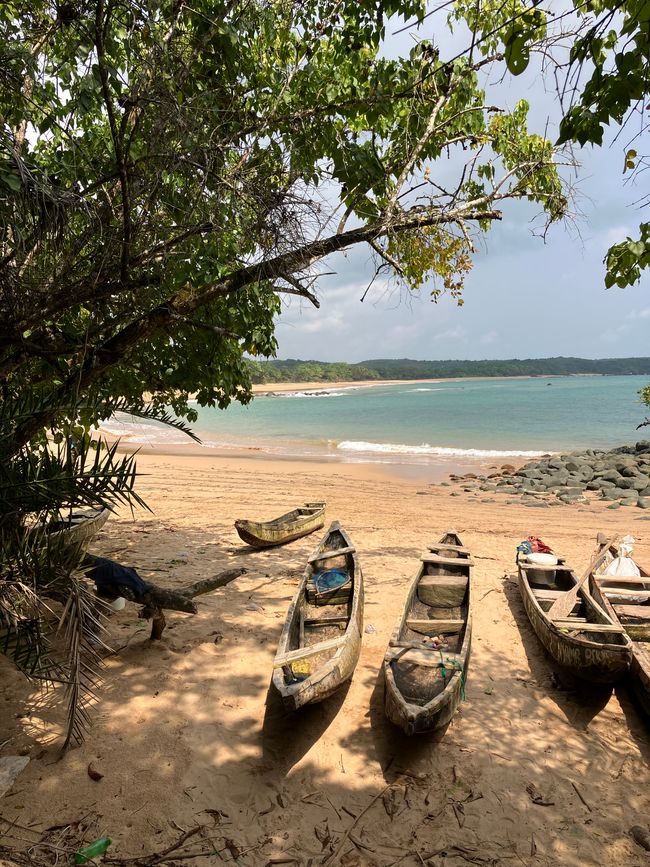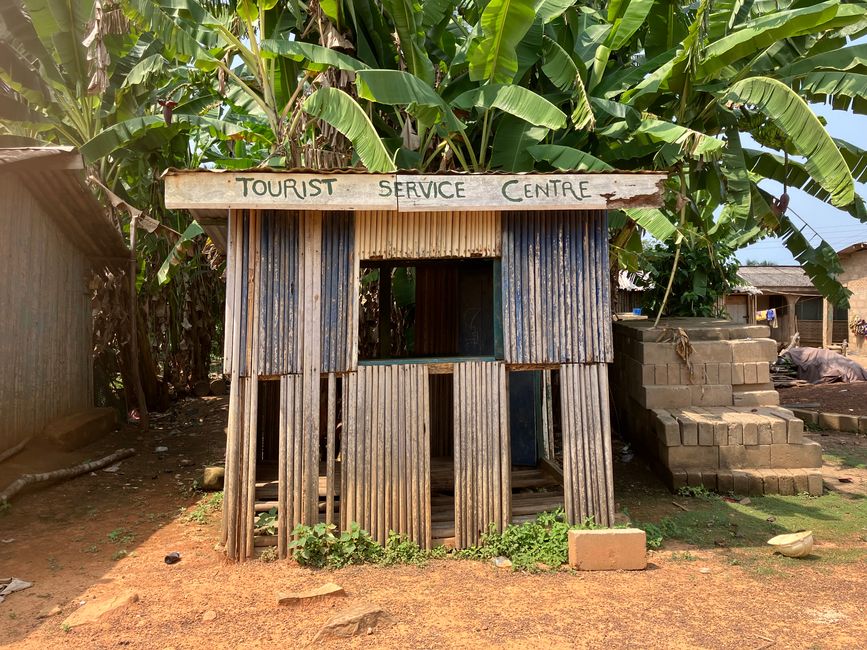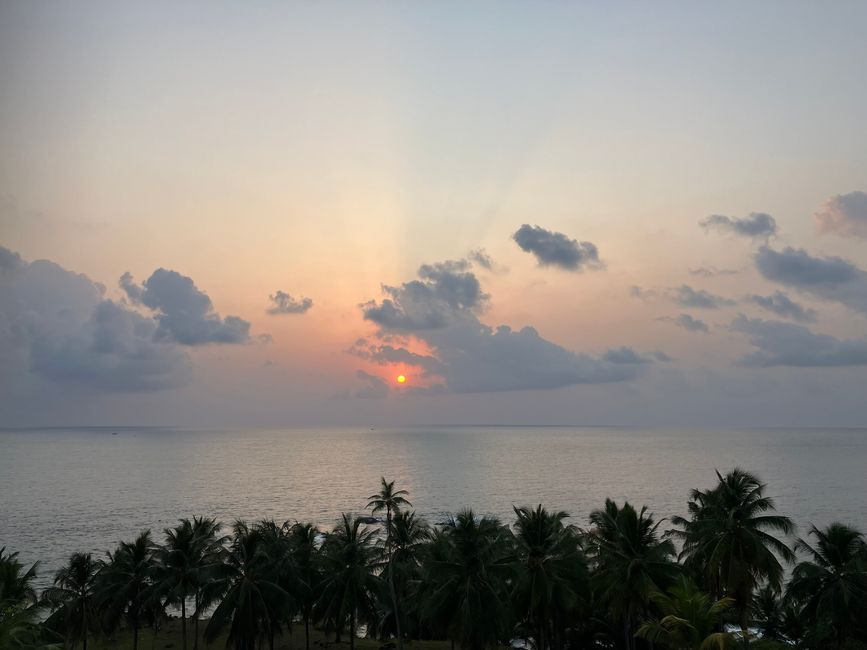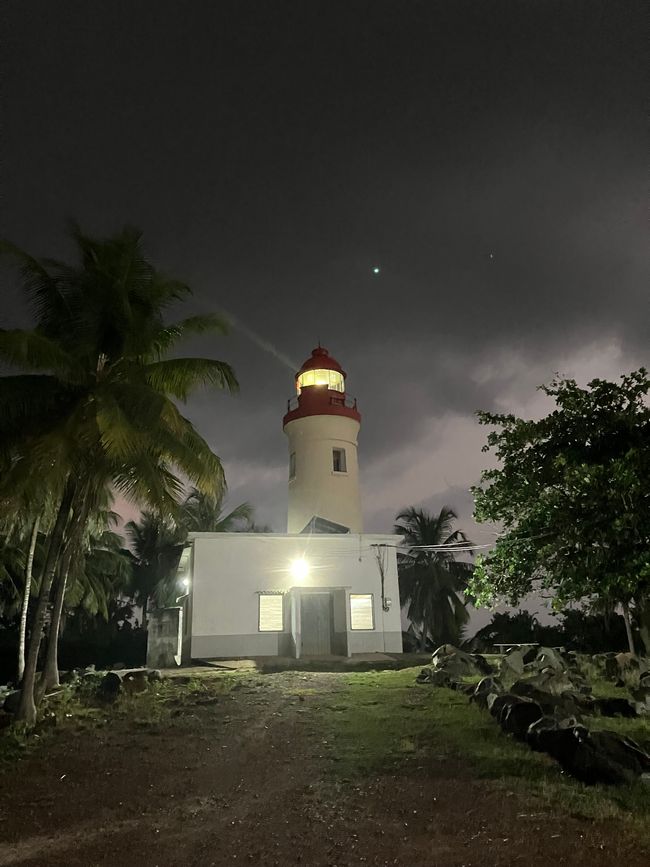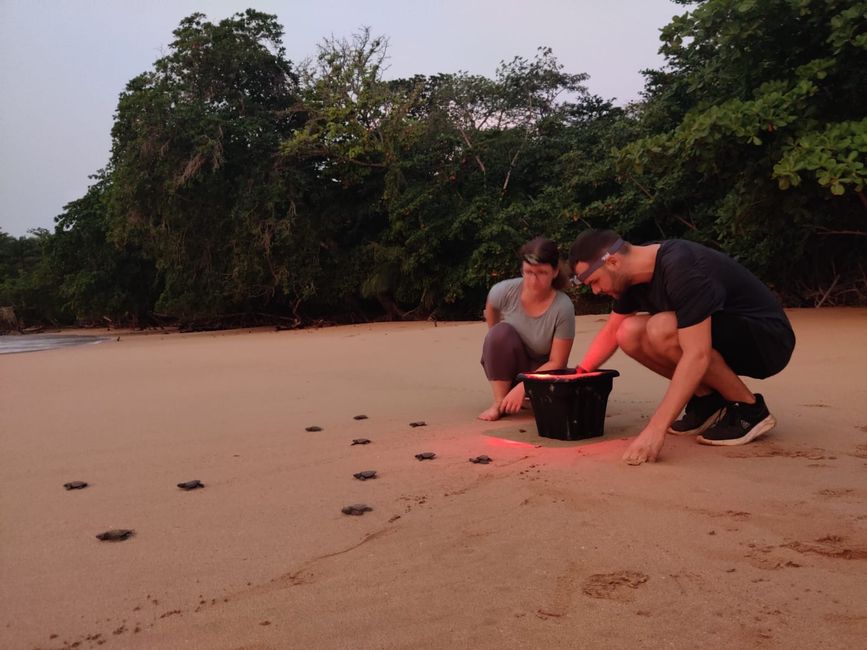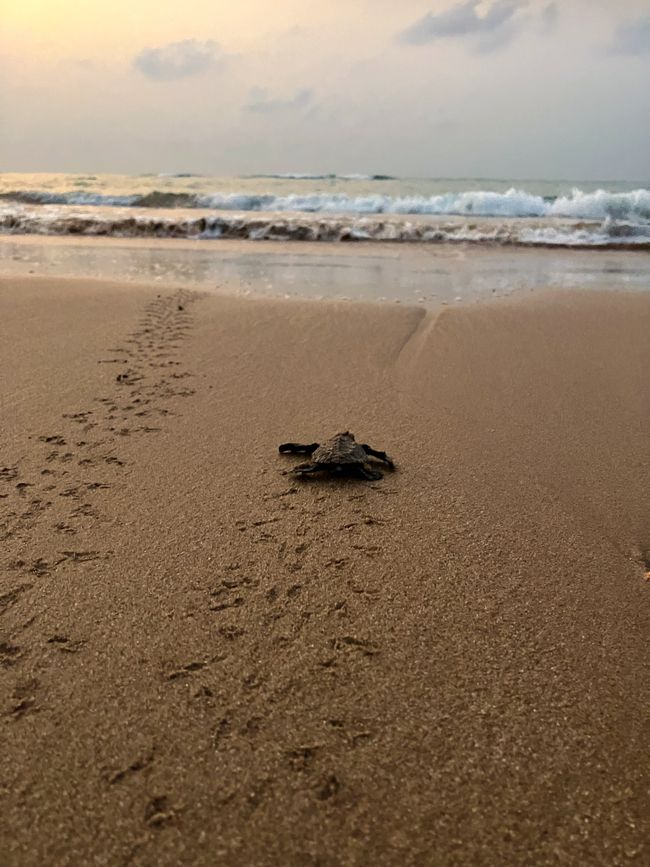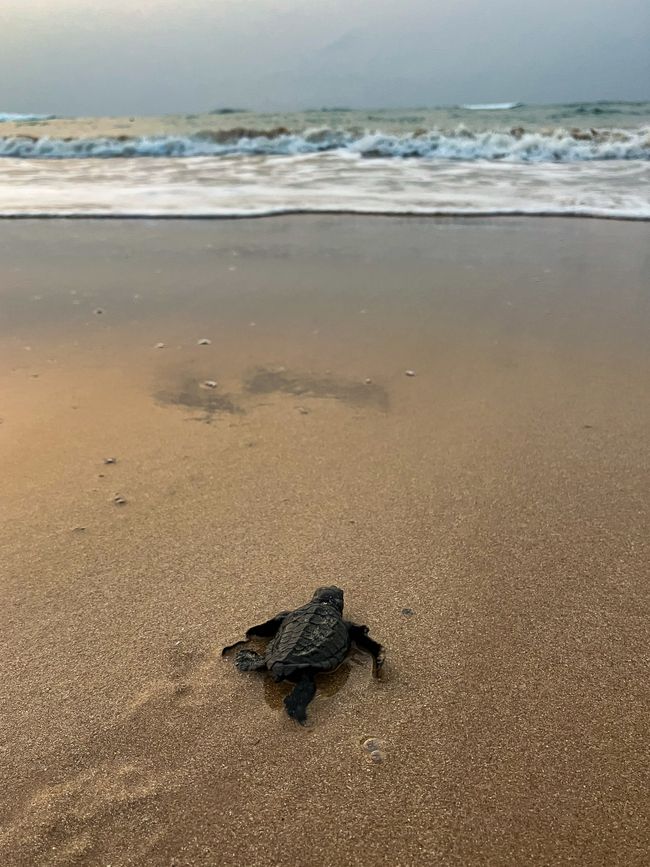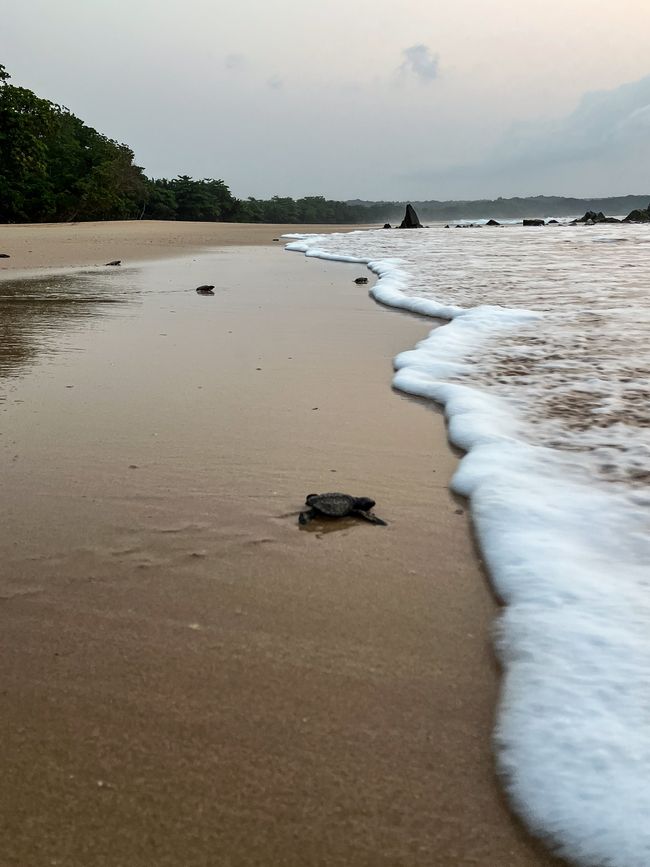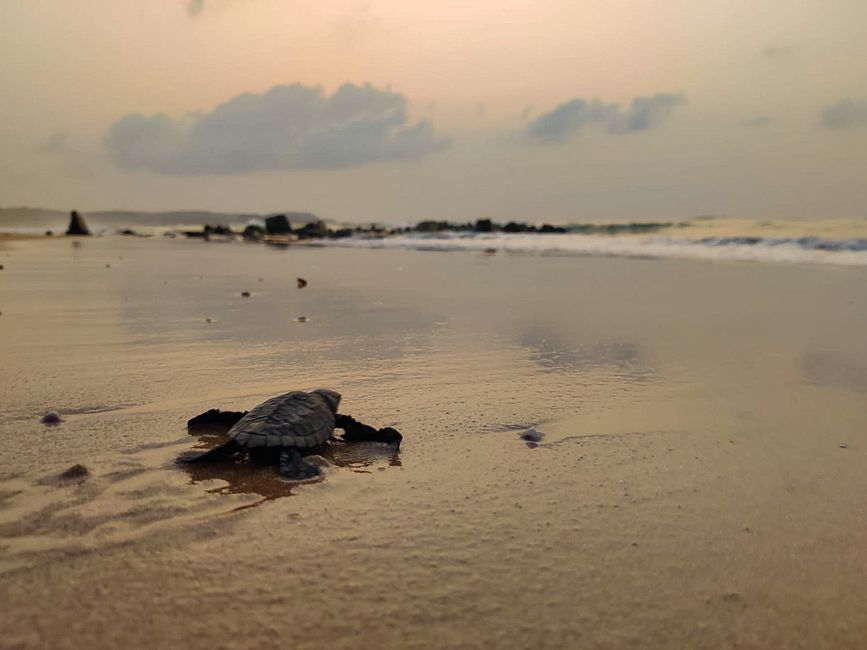The place of zero...
प्रकाशित: 21.01.2024
समाचार पत्रिका के लिए सदस्यता लें
This is my first post at my new location. Cape Three Point, or the Cape of the Three Points, is the place where you can be closest to both zero longitude and latitude on land. It is also the southernmost point in Ghana.
The journey here can only be described as adventurous. First we went to the supermarket in the last big city because we had to buy all the groceries for the coming weeks. The route to the supermarket is long and if you don't want to travel 3 hours for a carton of milk, you have to be logistically prepared. Then the car drove over hill and dale for about 2 hours and we scraped the undercarriage on the path one or two times. Then the road just ended in a village. A few weeks ago there was a storm here and the bridge was washed away. So far there are no signs of repairs. So we went with all our luggage over the footbridge and then on the other side of the river into a Land Rover. But this stopped after about 2 kilometers or at least that was the opinion of our supervisor. Unfortunately, his driving knowledge was limited to automatic cars and the 4x4 really gave him trouble. So what to do in such a situation? That's right, the woman is herself and after a few very skeptical looks, because you hardly see any female drivers here, I literally pulled the cart out of the dirt. With a bit of feeling and good persuasion, we managed to get the car over the mountain to our accommodation.
The accommodation is much more primitive than the last, but the house is right by the sea. So I've fallen asleep to the sound of the sea every evening so far. It's only a 5 minute walk to the beach and it looks like something out of a travel brochure. Miles of sandy beach with not a soul on it. Our turtle station is also here. If turtle eggs are found, they are buried here and protected from animal and human enemies. There are currently 7 nests breeding there. The temperature of the sand determines the sex of the turtle, so half is in the shade and the other half is in the sun. The aim is to achieve the most even distribution possible. Female turtles prefer warmer temperatures and males prefer lower ones. You can see a lot of things we have in common there.
The work here mainly consists of two parts. The first part is about the turtles. Here you can either go on midnight patrol or morning patrol. So that means getting up at midnight or 5 a.m. and then heading to the beach. Armed with red lights, we then search for clues. The main goal is to spot turtles laying eggs or at least find tracks that will lead us to the nests. Unfortunately, turtles are still hunted here and so we dig up the eggs and bring them to safety.
The second part of the project here consists of community work. This consists of farm work, painting the school building and picking up trash on the beach. “Our” beach is very clean, but unfortunately it looks completely different on the other side of the village. Plastic waste is just piling up here. After 3 hours of work, we had only cleaned 100 meters of beach and filled 5 bags.
But now we come to the part that everyone is eagerly waiting for...baby turtles. After 5 days of not even seeing a sign of a turtle, we finally got lucky one morning. A whole nest of turtles had decided to hatch. There were a few baby turtles in the enclosure. We carefully collected these in buckets and released them onto the beach. Not too close to the water so that the little ones could find their strength. 63 baby turtles were successfully released into the sea. The photos can only show a fraction of the cuteness. It was one of the sweetest moments I had the pleasure of experiencing as the turtles waddled towards the sea. Of course, I don't want to withhold these moments from you, so you can find a few videos here: https://drive.google.com/drive/folders/1-0U1af5HYNbwSTg9gGm47OH5ugl6HZ_z
For me, this was definitely a unique experience and I really hope that I get the opportunity to experience it again. Of course, I'll keep you updated on how my last week here in Ghana goes.
Kind regards from the turtles,
Veronica
समाचार पत्रिका के लिए सदस्यता लें
उत्तर
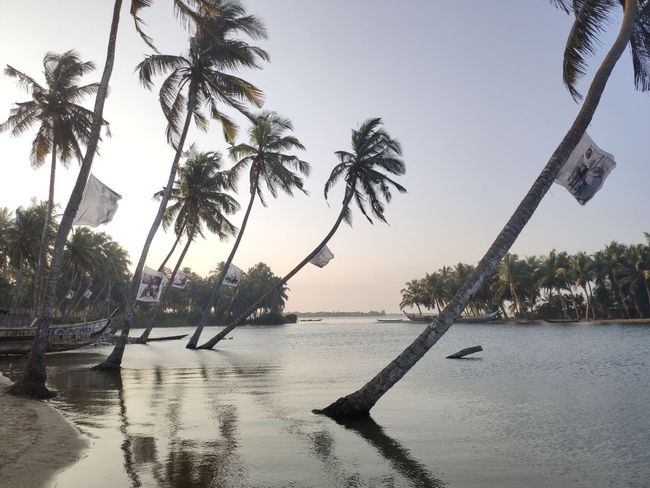
यात्रा रिपोर्ट घाना



